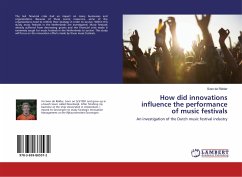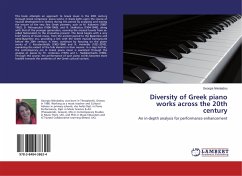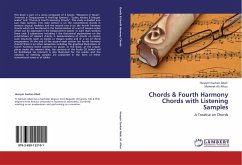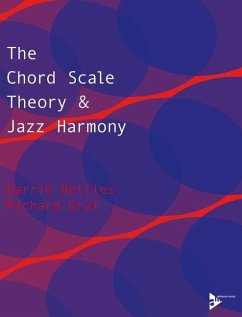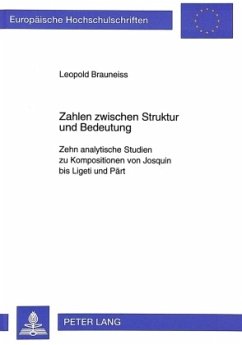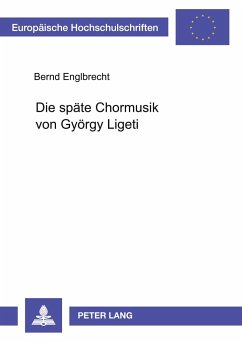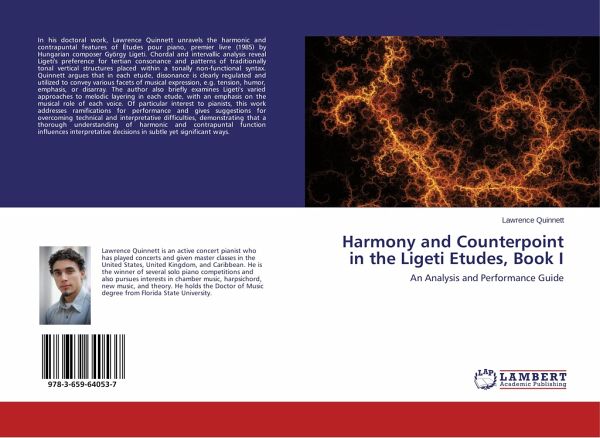
Harmony and Counterpoint in the Ligeti Etudes, Book I
An Analysis and Performance Guide
Versandkostenfrei!
Versandfertig in 6-10 Tagen
27,99 €
inkl. MwSt.

PAYBACK Punkte
14 °P sammeln!
In his doctoral work, Lawrence Quinnett unravels the harmonic and contrapuntal features of Études pour piano, premier livre (1985) by Hungarian composer György Ligeti. Chordal and intervallic analysis reveal Ligeti's preference for tertian consonance and patterns of traditionally tonal vertical structures placed within a tonally non-functional syntax. Quinnett argues that in each etude, dissonance is clearly regulated and utilized to convey various facets of musical expression, e.g. tension, humor, emphasis, or disarray. The author also briefly examines Ligeti's varied approaches to melodic ...
In his doctoral work, Lawrence Quinnett unravels the harmonic and contrapuntal features of Études pour piano, premier livre (1985) by Hungarian composer György Ligeti. Chordal and intervallic analysis reveal Ligeti's preference for tertian consonance and patterns of traditionally tonal vertical structures placed within a tonally non-functional syntax. Quinnett argues that in each etude, dissonance is clearly regulated and utilized to convey various facets of musical expression, e.g. tension, humor, emphasis, or disarray. The author also briefly examines Ligeti's varied approaches to melodic layering in each etude, with an emphasis on the musical role of each voice. Of particular interest to pianists, this work addresses ramifications for performance and gives suggestions for overcoming technical and interpretative difficulties, demonstrating that a thorough understanding of harmonic and contrapuntal function influences interpretative decisions in subtle yet significant ways.







